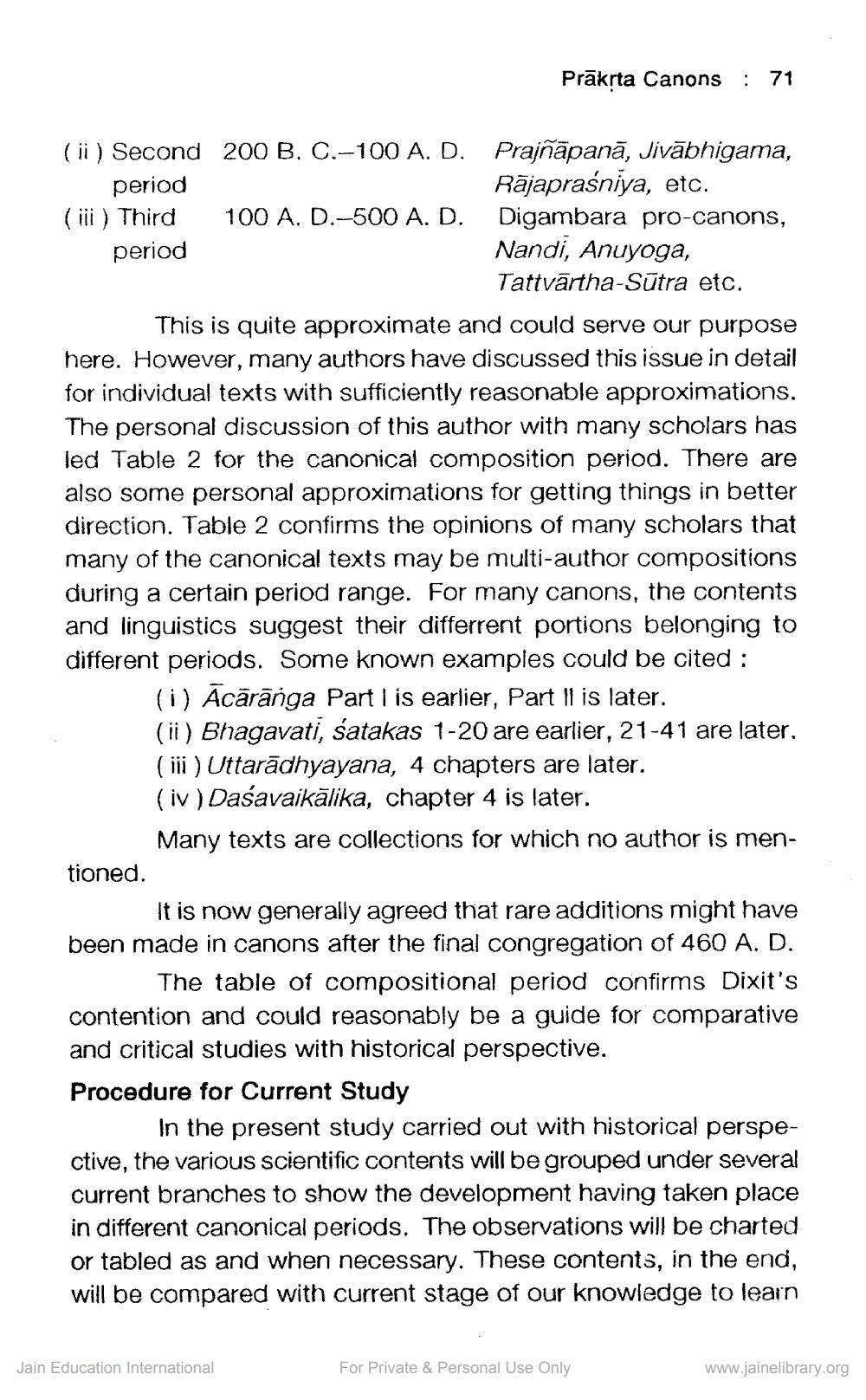________________
(ii) Second 200 B. C.-100 A. D.
period
(iii) Third period
tioned.
100 A. D.-500 A. D.
Prakrta Canons : 71
Tattvärtha-Sūtra etc.
This is quite approximate and could serve our purpose here. However, many authors have discussed this issue in detail for individual texts with sufficiently reasonable approximations. The personal discussion of this author with many scholars has led Table 2 for the canonical composition period. There are also some personal approximations for getting things in better direction. Table 2 confirms the opinions of many scholars that many of the canonical texts may be multi-author compositions during a certain period range. For many canons, the contents and linguistics suggest their differrent portions belonging to different periods. Some known examples could be cited: (i) Acārānga Part I is earlier, Part II is later.
(ii) Bhagavati, śatakas 1-20 are earlier, 21-41 are later. (iii) Uttaradhyayana, 4 chapters are later.
(iv) Daśavaikālika, chapter 4 is later.
Many texts are collections for which no author is men
Prajñāpanā, Jivābhigama, Rajapraśniya, etc. Digambara pro-canons, Nandi, Anuyoga,
Jain Education International
It is now generally agreed that rare additions might have been made in canons after the final congregation of 460 A. D. The table of compositional period confirms Dixit's contention and could reasonably be a guide for comparative and critical studies with historical perspective.
Procedure for Current Study
In the present study carried out with historical perspective, the various scientific contents will be grouped under several current branches to show the development having taken place in different canonical periods. The observations will be charted or tabled as and when necessary. These contents, in the end, will be compared with current stage of our knowledge to learn
For Private & Personal Use Only
www.jainelibrary.org




